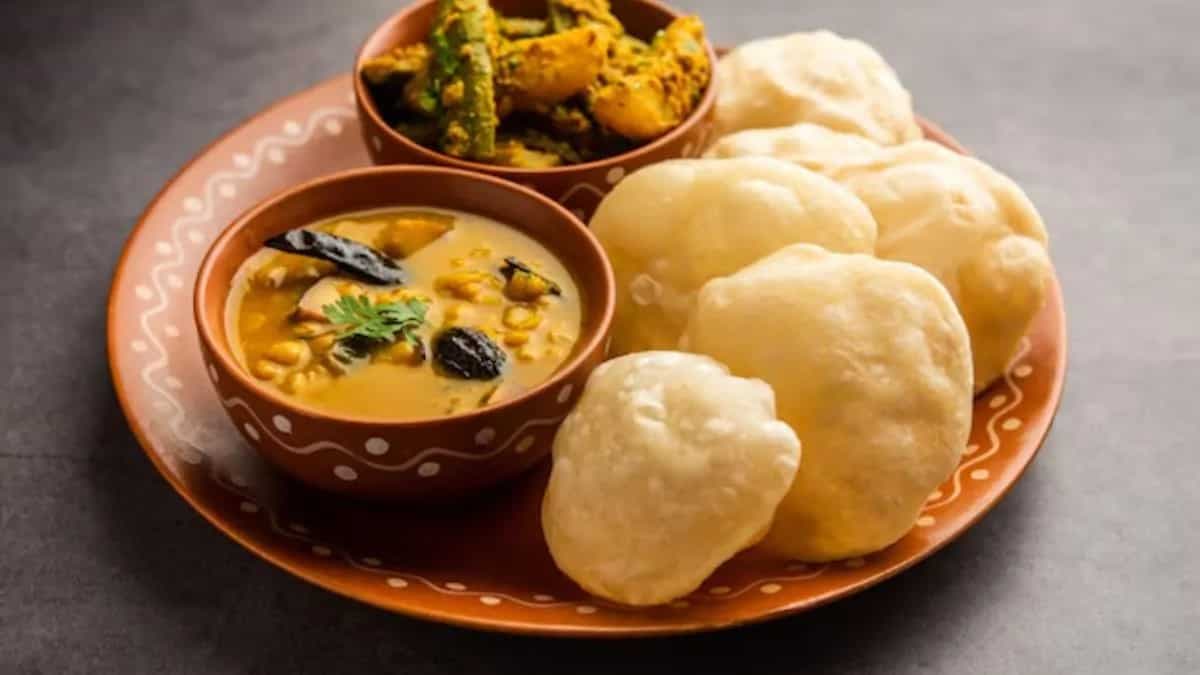For Bengalis, Durga Pujo is not merely a festival; it stands for so much more. For non-Bengalis, it is limited to pandal hopping, relishing delicious foods, and participating in the celebration, but for the community, it is a time they wait for an entire year to welcome Goddess Durga as a daughter. Pujo is that time of the year when people go out of their way to design the menu, host friends and family, work around the clock in pandals to ensure everything runs smoothly, and perform dhunuchi naach (dance) on the beats of dhak. Cities come alive during the celebration, and it kicks off on Mahalaya.

‘Maha’ and ‘Alaya’ are derived from Sanskrit, and they refer to the ‘Home of the Goddess’ or ‘Great Abode’. This auspicious day is marked in the Hindu calendar as the end of Pitru Paksha and marks the beginning of Devi Paksha (Debi Pokkho), a period in which Hindus celebrate the divine Goddess and all her forms. Mahalaya Amavasya ends the period of mourning ancestors, and it is believed that Goddess Durga begins her journey to Earth from Kailash (the humble abode of Lord Shiva). Not only does it symbolise the victory of good over evil, but it also celebrates Shakti. As soon as Mahalaya starts, Bengalis remove all the waste and broken things from their house and clean the entire house, including their kitchens, with holy water from the Ganga River.
Mahalaya will be celebrated on September 21, 2025, when Amavasya is expected to begin around 1 am and culminate around 1:42 am on September 22, 2025. Many Bengali households follow early morning rituals, enjoy a scrumptious breakfast that fuels their bodies, and get into the preparation of Devi Paksha. Slurrp connected with Bengali home chefs to learn about their food memories associated with Mahalaya. Get ready for a nostalgic ride.
Joyadrita Ragavendran Chatterjee
Joyadrita Ragavendran Chatterjee, a Bengali home chef living in Chennai, was brought up in a joint family. Remembering her childhood, she shared, “One such memorable occasion is the auspicious morning of Mahalaya, the end of Pitru Paksha and the onset of Debi Paksha, wherein it was customary to wake up in the wee hours of the day and listen to 'Mahishasur Mardini' by Birendra Krishna Bhadra. Post which Dada, my paternal grandfather, would do 'Tarpan' offering water, black sesame seeds along with rice made of 'Atap rice', boiled raw banana on a plantain leaf (often termed as 'Pind Daan') to his forefathers and other departed souls, while Numma, my paternal grandmother, would start preparing for the festivities to come.” Image Credit: Joyadrita Ragavendran Chatterjee
Image Credit: Joyadrita Ragavendran Chatterjee
This day meant an elaborate vegetarian breakfast for the family. The spread included - luchi/kochuri (puri), cholar dal (chana dal), and aloor dum (potato curry), followed by lunch of either khichuri, labra (mix veg), beguni (eggplant fritters), chutney, payesh (kheer) or other vegetarian fares like narkel-posto bora (coconut poppy seeds fritters), potol posto (pointed gourd dish), chhanar dalna (homemade paneer kofta gravy). Men in her house were responsible for sourcing fresh ingredients from the market, while women were used to cooking. Continuing the tradition at her house, she is the one who takes care of breakfast and lunch meals with her mother. "Maintaining my family customs and rituals, I make sure to follow the first day of Pujo exactly as it was during my childhood in spite of a busy lifestyle," she added
Ayandrali Dutta
Ayandrali Dutta, a writer and culinary storyteller, is organising a Bengali food pop-up, ‘Fest from the East’, ahead of the Pujo celebrations. You can relish delicious Bengali food at The G.T. Road from September 23 to 28, 2025, and miss home a little less. Sharing Mahalaya traditions followed at her home, she said, “On the day of Tarpan, what I have seen in the house is that food offered to the ancestors is traditionally prepared in copper or brass vessels and served on banana leaves. While the dishes may vary, they always include rice, dal, kheer, and select vegetables like labra; all dishes are cooked in ghee and sendha namak (rock salt). The ritual performer wears a dhoti, and the act of pinda-daan is carried out bare-chested. As part of the ceremony, a cow and a dog are also fed, followed by offering meals to Brahmins (which is optional). Once these rites are completed, the family members partake in the meal.” While Ayandrali had been living in Delhi for more than 20 years, she carries forward the Bengali traditions and continues to spread joy. On Mahalaya, since it marks the homecoming of Goddess Durga, she hosts her loved ones. “There is a little bit of music, singing, dancing, and I make sure to serve a home-cooked meal. There is no specific menu, but it’s all Bengali food on the table,” she added.
While Ayandrali had been living in Delhi for more than 20 years, she carries forward the Bengali traditions and continues to spread joy. On Mahalaya, since it marks the homecoming of Goddess Durga, she hosts her loved ones. “There is a little bit of music, singing, dancing, and I make sure to serve a home-cooked meal. There is no specific menu, but it’s all Bengali food on the table,” she added.
Aerica Sardar
Aerica Sardar, a food connoisseur and traveller, says that there is no special food that Bengalis consume on Mahalaya, but most prefer a veg spread with dishes prepared with no rice, onion, or garlic. The meal at her house includes luchi, chhanar dalna, aloor dum, and cholar dal. For sweets, sandesh and mishit doi take the centre stage. "The meal is simple and home-cooked," she added. It’s a vegetarian fare on Mahalaya at Aerica’s home, and the food is not consumed before tarpan.



